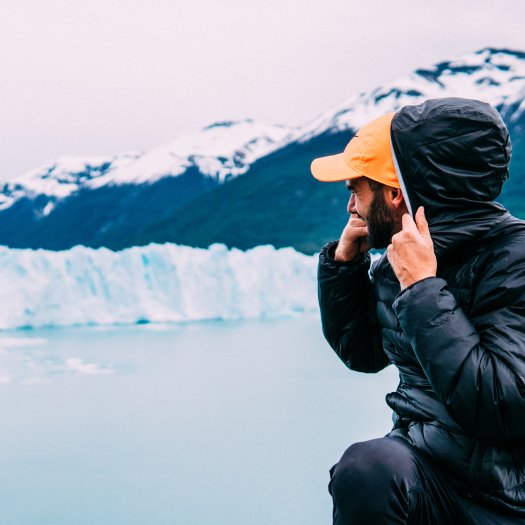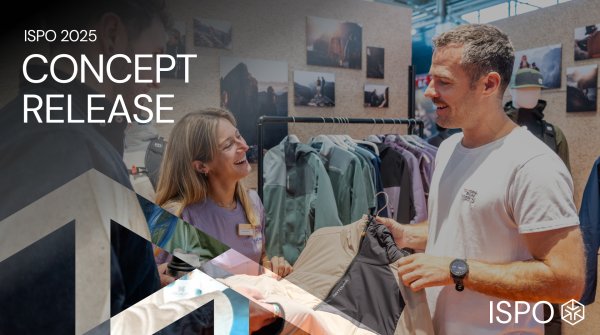PFC is an abbreviation. The three letters stand for per- and polyfluorinated chemicals. This is a group of over 8000 known chemical substances. PFCs consist of carbon chains of different lengths. What makes them special is that the hydrogen atoms in these chains have been replaced by fluorine. This means that it is an artificially produced, synthetic compound. Although these substances do not occur naturally in nature, they can now be detected everywhere on earth. Not only in heavily populated areas, but also in remote areas such as the Arctic, they can now be found. And this is a burden on the environment. Especially since the substances do not degrade on their own due to their special structure. If you want to destroy the substances, you have to burn them under extreme heat.
Because of their many benefits and ease of manufacture, PFCs are now found in many everyday products. But over time, researchers have found that the substances accumulate both in nature and in the human body. And as mentioned earlier, the substances are difficult to break down. In the human body, PFCs affect the hormone system. They even have the potential to impair reproductive ability. Some PFCs are even classified as carcinogenic.
PFCs have numerous practical properties that make them interesting for the outdoor industry. The materials are for example:
- Water repellent
- Dirt-repellent
- Grease and oil repellent
And it is precisely these points that are the focus of outdoor and functional clothing. This is why PFCs have been or are being used in many jackets, pants and other items of clothing and equipment.
But it is not only the outdoor industry that uses PFCs. The automotive industry, the metal processing industry or the carpet and furniture industry also use the substances to protect their products. Or have you ever wondered why pizza boxes are actually so stable and don't immediately soak through? The reason is also PFCs, which protect the cardboard from grease.
For the outdoor industry, two substances from the group of PFCs are of particular importance:
- Perfluorooctane sulfonic acid (PFOS).
- Perfluorooctanoic acid (PFOA)
These are found primarily in membranes and impregnations and therefore ensure that products are waterproof and protect you from rain.

In the meantime, more and more manufacturers are banning perfluorinated and polyfluorinated chemicals from their production, thus doing something good for people and the environment. We present you some examples.
A good example is Pyua. The Kiel-based label is committed to environmentally friendly production and makes its products entirely from recycled polyester. To this end, the Kiel-based company works closely with a recycling company. No PFCs are used in the entire production process.
The Swedish outdoor brand Klättermusen was founded back in 1975 and was the first label in the outdoor sector to do without PFCs. That was already in 2008.
The southern German outdoor manufacturer Vaude has also managed to eliminate PFC from its products. To make its products waterproof, the manufacturer relies on Sympatex. The membrane does not contain any PFCs.
Picture is a French label that primarily produces clothing for winter sports enthusiasts. According to its own information, the company processes 95 percent cotton, which is certified according to the GOTS standards. The remaining five percent is recycled cotton. All water-repellent materials are free of PFC.
Outdoor manufacturer Mammut has been investing a lot of money and time in research around PFC alternatives for years. For example, the company participated early on in the POPFREE research project led by the Research Institutes of Sweden (RISE). The company's goal is to manufacture all products without PFCs by 2025.
Patagonia is also working on manufacturing its products without PFCs in the future. The company has set autumn 2022 as its target. However, the company still has to find alternatives for highly functional garments with DWR impregnation.
For the spring/summer 2019 collection, Jack Wolfskin was able to announce that all textiles as well as bags and backpacks are free of PFCs. Only with the shoes are the material experts at Jack Wolfskin still tinkering to remove the PFCs from the production.
Salewa says it has been doing without long-chain PFCs in its products since 2014. Completely PFC-free collections can be recognized by the labels BIONIC FINISH® ECO, TEFLON™ ECOELITE™ and PHOBOTEX® PFC FREE as well as the PFC-free symbol. However, the manufacturer points out that contamination with PFC can never be completely ruled out due to production conditions.
According to Schöffel, it is trying to reduce PFC and labels corresponding products with "PFC free". Nevertheless, the manufacturer points out that it is not yet possible to completely do without PFC for certain textiles with special technical requirements.
Gore-Tex is the market leader when it comes to water-repellent textiles. The textile giant's commitment at ISPO 2017 that Gore-Tex also wants to do without PFCs by 2023 was therefore all the more important. With the presentation of the new ePE membrane, Gore has reached a milestone on this path. The new material is particularly lightweight and robust against wind and weather, while also being breathable - and free of harmful PFCs. From fall 2022, the first products from various manufacturers are to be available with the new membrane, including Adidas, Arc'teryx, Dakine, Patagonia, Reusch, Salomon and Ziener.
In the outdoor industry, PFCs are mainly used when products need to keep out moisture, rain and dirt. This is especially the case with jackets and pants, but also with tents or backpacks. Through the use of PFC in the membranes and the impregnations, the textiles withstand even the worst downpours and you stay dry.
- Perfluorooctanoic acid (PFOA) for water-repellent membranes
Substances such as perfluorooctanoic acid (PFOA) are primarily used for a water-repellent membrane. PFOA is used in the production of fluoropolymers and acts as an emulsifier. Therefore, it is used in the manufacture of microporous membranes. Many manufacturers who produce their own membranes use PFOA. Even long after production, it is still possible to detect the substance. However, perfluorooctanoic acid is not volatile. This means it does not evaporate from the material and therefore does not pose a direct risk to the wearer. The situation is different in production facilities. There, there are often insufficient protective measures for people and nature. This means that people are often exposed to the substances unprotected and they can simply get into the environment.
- Impregnations with PFCs
All outdoor sports enthusiasts know it: clothing, backpacks, tents and the like will only keep dry in the long term if they are properly impregnated. To maintain the effect, it is important to impregnate the items again and again. Unfortunately, the impregnating agents with PFCs are particularly water-repellent and breathable. But there are now alternatives on the market. Even with DWR impregnations, there are now alternatives without PFCs, which are based on silicone or polymers, for example.
Nikwax products are also recommended; they can be used to freshen up impregnated textiles. Among all the agents on the market, they are among the most environmentally friendly and still protect the textiles particularly well against moisture. Heitmann products are now also available without PFCs. However, not all manufacturers of PFCs manage to completely remove these substances from the impregnating agents.

The environmental protection organization Greenpeace has been observing the outdoor industry and its efforts or non-efforts with regard to the reduction and avoidance of PFCs for quite some time. The fact is that many manufacturers still have some catching up to do. But the good news is that there are also companies that are aware of their responsibility towards people and the environment and are already doing without the use of PFCs. In this case, it is not the top players in the industry, but primarily the small manufacturers who have taken on a pioneering role here and in some cases have been doing without PFCs for years. However, there is also a rethink among the large companies and it can be assumed that most products will be manufactured more and more sustainably and without PFCs in the coming years.

The fact that the use and contact of PFCs is harmful to humans and the environment is no longer a secret. It is therefore all the more important that the outdoor industry also refrains from the use of PFCs in manufacturing, despite many convenient advantages. You as a consumer can help minimize the use of PFCs by buying products from the brands mentioned above. This way you do something good for yourself and the environment!
 SustainabilityReady for the Green Deal? An Update for the Sports Industry
SustainabilityReady for the Green Deal? An Update for the Sports Industry
- Awards
- Mountain sports
- Bike
- Fitness
- Health
- ISPO Munich
- Running
- Brands
- Sustainability
- Olympia
- OutDoor
- Promotion
- Sports Business
- Textrends
- Triathlon
- Water sports
- Winter sports
- eSports
- SportsTech
- OutDoor by ISPO
- Heroes
- Transformation
- Sport Fashion
- Urban Culture
- Challenges of a CEO
- Trade fairs
- Sports
- Find the Balance
- Product reviews
- Newsletter Exclusive Area
- Magazine




